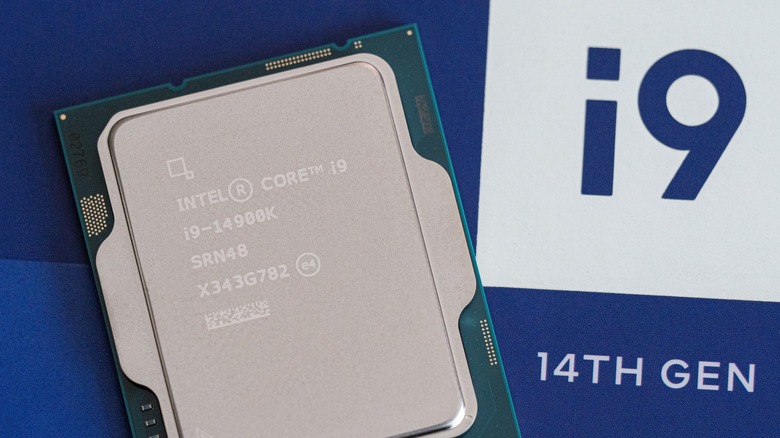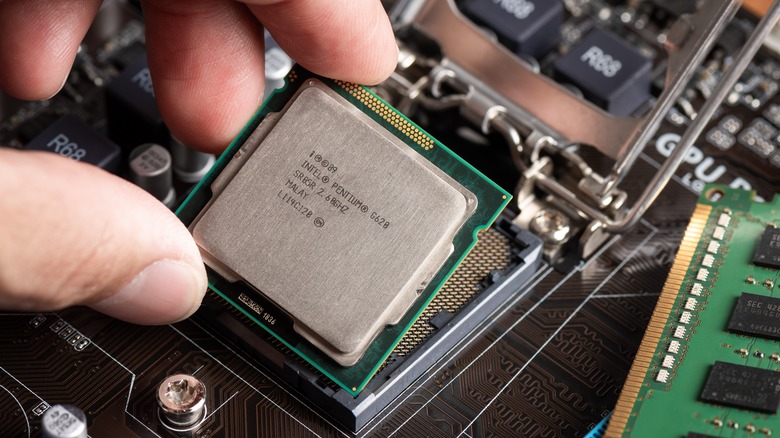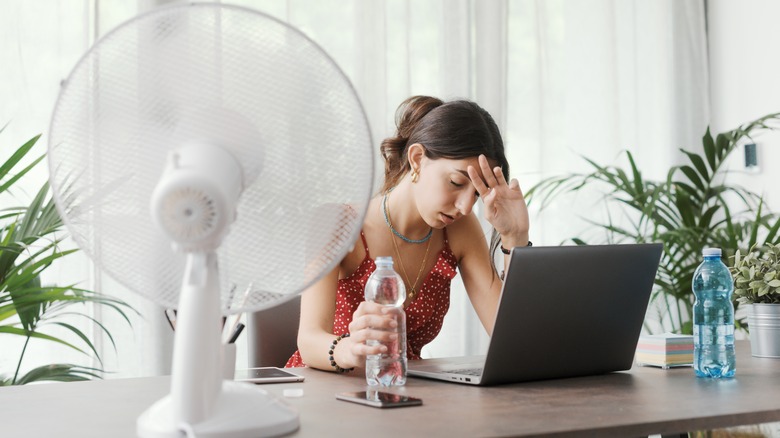5 Reasons Your Intel Processor May Experience Overheating Issues
There are few moments that terrify PC owners like an overheating processor. It's right up there with the blue screen of death in terms of issues that could signal serious trouble for your computer. While any computer can experience processor overheating, thankfully, most of the reasons why are easy to check for. These causes apply to Intel processors, but equally to those from AMD or any other manufacturer.
On Intel PCs, one good indicator that your processor is overheating is if the computer crashes or shuts down shortly after turning on. CPU throttling, low clock speeds, and general system slowness are also reasons to check your computer's temperature. Many PCs have software, such as Corsair iCue, that manages the cooling systems and tracks temperature data. There's also a plethora of other software available for CPU monitoring. If your computer isn't yet overheating but you're still having performance issues, you may want to check out some of our great tips to make your CPU run better.
Whether you're experiencing overheating or not, it's useful to know the ways it can commonly occur, so you can diagnose issues in future and avoid mistakes. From quirks of cooling systems to failing fans and cramped cases, these are five causes of overheating for Intel CPUs.
An insufficient or improper cooling system
The first thing to check if your computer's CPU is overheating is whether your cooling method is working, and if you've a powerful enough cooling solution. The two primary cooling solutions for PCs are air and liquid cooling. In an air cooling system, a heat sink helps to transfer heat off the processor, before cooling by fans. While air cooling is the most prevalent form of cooling, it is not the most powerful. Liquid cooling systems are the other popular choice for consumer grade PCs, consisting of coolant that absorbs heat and a radiator that exposes the liquid to air.
When it comes to air cooling, make sure you have the right cooler size, that the screws on the mount are not too tight, and that all fans are operational. For liquid coolers, make sure you're using the correct radiator size for your build, and that there are no coolant leaks. Additionally, liquid coolers work best with the radiator mounted at the top of the case rather than the side.
Also check for improperly applied thermal paste. Ensure that you are not using too much or too little, with a general rule of thumb in the PC building community being that you should use about the size of a green bean, spreading the paste evenly across the processor. Make sure you're using the best thermal paste for your PC. Additionally, you should change your PC's thermal paste every three years on average.
Overclocking
If you overclock your Intel processor regularly, that could be the cause of overheating. Overclocking your processor refers to the practice of increasing its clock speed — that is, the number of calculations it performs in a given amount of time. Processors come with factory clock speed settings to prevent them from having short lifespans, since working at the highest clock speeds they're capable of would mean they won't last as long. Boosting those clock speed settings to the actual limit is a great way to eke out extra performance in games and other intensive tasks, but in the long term it can greatly harm the processor.
Think of your processor like a worker at a company. If that employee is consistently overworked, they may meet your expectations for a while, but eventually they will burn out from the constant exhaustion and fail to perform at all. By the same token, overclocking is not something you should subject your processor to on a regular basis unless you want to burn through your CPU's lifespan. Aside from leading to a higher than normal chance of overheating and failure, overclocking can also void the warranty of an Intel chip, leaving you with no remedy should it need to be replaced.
The computer case is trapping heat
When trying to optimize thermal efficiency in a PC, you need to pay close attention to airflow. In a desktop PC, that means making sure the computer case is efficiently taking air in from the outside and expelling hot air. That's the reason you'll often see so many fans in powerful desktops, as the air in those systems is rapidly heating up and must be expelled as quickly as possible.
The type of case your computer is in can make a big impact on its thermal performance. The best case type for optimal airflow is mesh, in which the front of the case — and in some cases the top and sides — is made of a woven wire mesh that allows for transparent airflow while still keeping dust and debris from entering. A closed case can lead to overheating, but if it's in conjunction with improper or insufficient cooling, the problem can be compounded. No matter what case type you're using, make sure all of the fans are clean and operational.
If you're using a laptop, its chassis is designed specifically to accommodate airflow. If the laptop is overheating, ensure that none of the intake or exhaust vents are blocked or clogged. Despite being referred to as laptops, many have vents on the bottom that become blocked when the computer is sitting on your lap, relying on a flat surface like a table to have some breathing room.
It's too hot in the surrounding environment
Cooling systems in a PC have the tireless job of pulling in cool air and pushing hot air out. However, if the computer is sitting in a hot room or outdoors on a hot day, there won't be any cool air to draw in. Instead, the system will pull in the hot air from your environment, which can easily overheat any CPU, including an Intel processor. Tempting as it may be to bring your laptop poolside, or to the beach for a remote work session on a scorching summer day, it might not be able to handle the heat. Even indoors the room can get too hot, meaning your computer's fans slurp up all that heat and your processor, already sweating, suffers the burnt of it.
If you're outside on a warm day and find your CPU overheating, take the computer indoors immediately. Desktop owners should also be aware that if you stick your well-cooled PC into a computer cabinet or other enclosed space, you've just created a larger, unventilated container around your case that will continue to trap heat. Even an entire room can be too small to dissipate the heat from a powerful PC. If you have a high-end gaming PC or workstation running in a small dorm room or bedroom, you should not operate it for long periods without the ventilation of cooler air, such as running the air conditioning or opening a window or door.
Improperly configured BIOS
Your BIOS is the instruction set your motherboard uses to boot the computer and start your operating system. It's also where there are settings on how much power the chip can draw and how fast your fans spin at different CPU temperatures. Although these settings are not a concern for the average user, it might be worth double checking them if your processor is overheating. Some high-end systems may have voltage settings enabled by default that cause a chip to operate outside its thermal design power (TDP). These settings are often given names like Turbo Boost, and turning them off might improve the CPU's thermals. Making sure fans kick on aggressively when the processor heats up is also essential.
It's important to note that while high voltage settings can push a struggling CPU over the edge, an overheating incident can be caused by a combination of BIOS settings and other reasons. Once you've ensured that your BIOS is configured properly, look elsewhere for problems. It is easy to make a mistake when editing BIOS settings if you're not familiar with PC configuration, which could lead to further issues. The proper BIOS settings for your PC depend on which model of processor and motherboard you're using — plus each manufacturer has a different interface and terminology for their custom settings.





